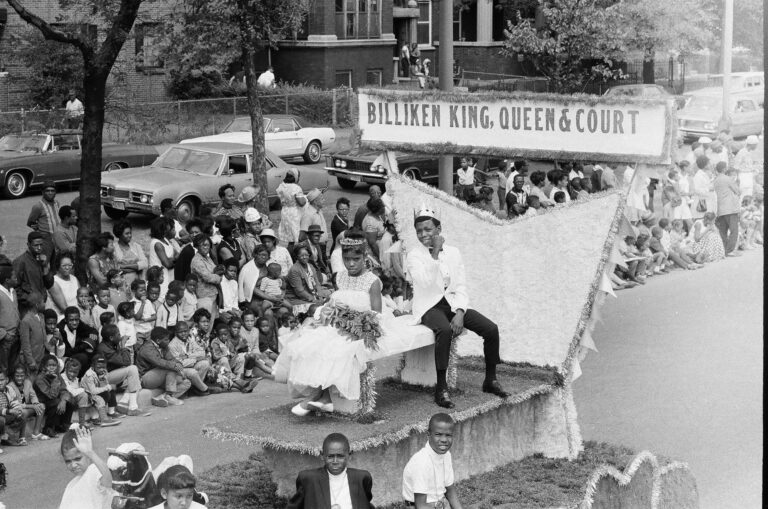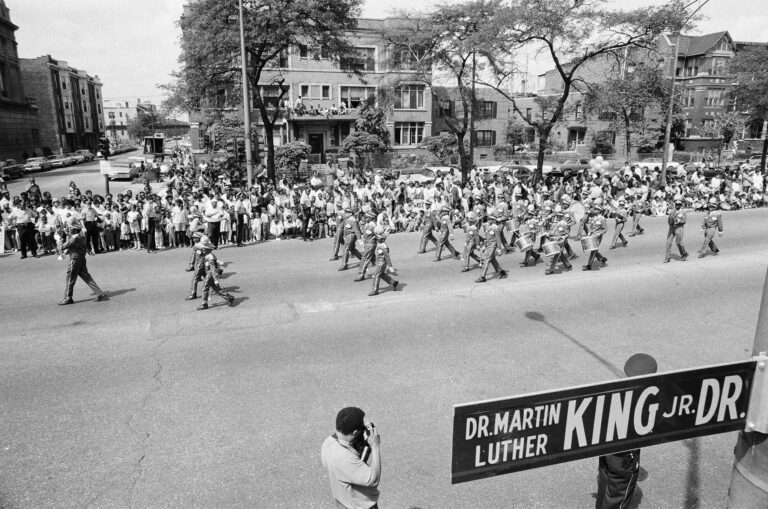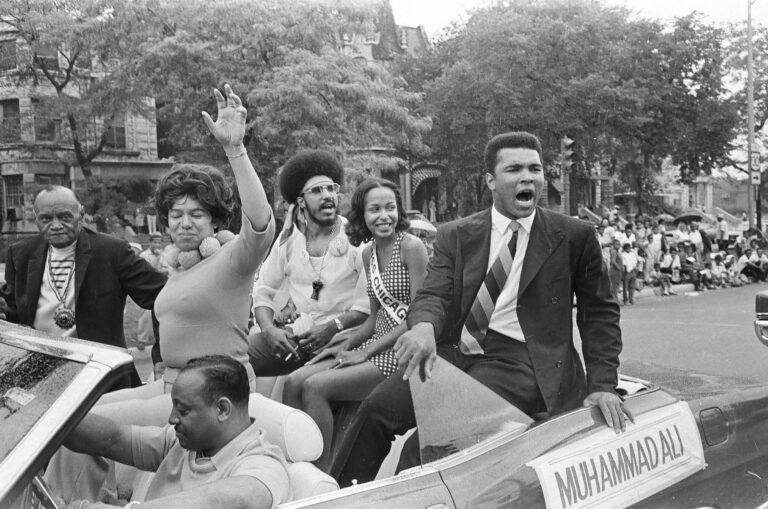For the past ninety-one years, one of Chicago’s back-to-school traditions has been the Bud Billiken Day Parade, which passes through the historic South Side neighborhood of Bronzeville and concludes with a picnic in Washington Park.
In 1923, Chicago Defender founder Robert S. Abbott and his managing editor, Lucius Harper, formed the Bud Billiken Club. Abbott had long expressed a concern for Chicago’s African American youth, and the success of the Defender‘s “young people’s page” convinced him that a club would also be popular. Harper apparently chose the name “Bud” because it was his own nickname, and “Billiken” because of its association with an ancient Chinese mythical character believed to be the guardian angel of all children.

The float for the Bud Billiken Day Parade king, queen, and court, August 10, 1968. ST-40001296-0010, Chicago Sun-Times collection, CHM; Bob Black, photographer
By 1929, the Bud Billiken Club, with its membership cards and identification buttons, was so popular among Chicago’s Black youth that Abbott decided to initiate an annual parade to celebrate it. He led the first parade in his Rolls-Royce, and Frank Gosden and Charles Correll of Amos ‘n’ Andy fame were the first guests of honor.

The Bud Billiken Day Parade on Martin Luther King Drive, August 10, 1968. ST-40001296-0004, Chicago Sun-Times collection, CHM; Bob Black, photographer.
Since the 1940s, the Bud Billiken Day Parade has been sponsored by the Chicago Defender Charities, and has become known as the oldest African American parade in the country. Participants in the parade, which proceeds south on Dr. Martin Luther King Jr. Drive from 39th to 51st streets culminating with a picnic in Washington Park, have included presidents Truman, Kennedy, and Johnson; Nat King Cole; Michael Jordan; Muhammad Ali, Oprah Winfrey; and Barack Obama.

Boxer Muhammad Ali rides in a car in the Bud Billiken Day Parade at 39th Street and Martin Luther King Drive, August 9, 1969. ST-40001287-0033, Chicago Sun-Times collection, CHM
Toward the late 1990s spectator estimates of the Bud Billiken Day parade, held on the second Saturday of August, ran into the millions, and the event was routinely considered one of the largest of its kind in the United States. See more images of past Bud Billiken Day Parades.
CHM Images
Peruse thousands of digitized prints and photographs at CHM Images, our online portal. Featured galleries include images from our newly acquired Chicago Sun-Times Photography Collection, Raeburn Flerlage’s work documenting the Chicago blues and folk music scene during the 1950s–1970s, and Declan Haun’s photography capturing the American Civil Rights Era. We encourage the use of our images for a variety of personal, nonprofit, and commercial purposes and all proceeds support the Chicago History Museum and our mission to share Chicago stories.